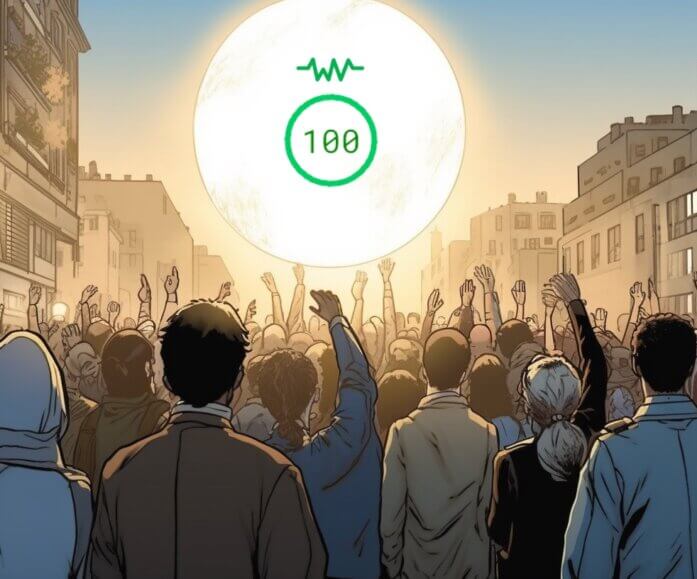
Infinite Scroll landmines (and how to avoid them)
If you’ve used any form of social media in the last ten years (i.e. everyone), you are already familiar with the basic concept of ‘infinite scroll’.
At its core, infinite scroll is the functionality of digital products where new content automatically loads when a user reaches the end of the content they are currently reading.
How to recognise infinite scroll
On Twitter, it’s the endless loading of (Help!) more tweets (See: Doomscrolling). In digital publishing, it’s when a reader finishes one article and another article automatically loads. The idea is that infinite scroll removes “friction” for users — they don’t have to do anything to get to the next piece of content — and ideally keeps them around and paying attention to your product.
For publishers, infinite scroll can go a long way to increasing pageviews and ad impressions, and it’s a relatively easy functionality to add to a basic website.
But here’s the rub…
As far as site features go, infinite scroll has an abnormally high number of landmines that can, in aggregate, become huge headaches if you’re not careful and thorough when implementing it.
Here’s what you should keep in mind when going with infinite scroll:
Does infinite scroll integrate with your ad tech?
Whether it’s programmatic or native inventory, ad tech can be difficult to keep square at the best of times, let alone when you have automatically-loading pages.
Targeting adverts to specific articles or topics can quickly become an issue, particularly when it comes to the use of wallpapers and sticky ads.
For example, say you have an advertiser who only wants their ads shown around travel stories, and are using a full background wallpaper behind your article. Or an ad that stays with a reader as they scroll down a page.
- If the next article loads isn’t a travel article, are you making sure those displays disappear in time?
- What if the user scrolls back up to the original article? Will your ads load again?
Issues like these can have ramifications throughout your business, particularly if they are native ads sold directly by your sales team, who then have to deal with an unhappy client.
A related issue is that of ad “viewability” – a percentage measurement for how visible ads are on a site. Many contracts with advertisers call for a minimum viewability rates, sometimes around 70% or 80%. Your viewability metrics can take a hit if your infinite scroll is set up so your next article essentially loads too early, triggering a pageview and loading those ads before a user actually scrolls enough and views those ads.
This risk is why some publishers take the route of the truncated article and “Read More” button rather than infinite scroll. While this offers a less seamless reader experience, it signifies a more engaged reader, which leads to more reliable ad viewability that could otherwise offset the other benefits of infinite scroll.
These are just a couple of examples of a quite complex technical issue, but you get the idea: Make sure your infinite scroll plays nice with your ad tech!
Ensure your analytics are configured correctly
You can only make smart informed decisions for your business if they are based on clean, accurate and reliable data about your site, and in particular, how readers are interacting with it.
Infinite scroll can mess with analytics in a myriad of ways, but the most common issue is with bounce rates – the percentage of users that leave your site after reading just one article, rather than sticking around.
Publishers who aren’t careful or thorough when installing infinite scroll can sometimes see their bounce rates drop to zero or 1%, which is highly unnatural. There’s a number of ways this can happen, but the obvious one is when your analytics setup registers a pageview before one has actually happened. Or your site triggers a second pageview immediately when a reader lands on your site.
These will obviously cause your bounce rate to plummet and raise questions about the overall accuracy of your analytics. This issue can be fixed by setting parameters for how exactly your analytics registers a pageview. However, it requires an awareness that bounce rate issues can happen with infinite scroll.
Don’t let infinite scroll break your SEO
Optimising for search is a key part of many digital publisher’s growth strategy. So you certainly don’t want the potential benefits of infinite scroll – retention, pageviews et al – to come at the expense of your SEO. One example of where this can be an issue is with home and category pages if you’re using JavaScript to create the infinite scroll experience.
Category pages (Like Sports, Business, etc on a general news website) are a great way for Google to crawl and get the general structure of your website and its content. But Google doesn’t guarantee it will register and follow JavaScript like a web browser would. This can cause all sorts of problems for how you rank on Google if your site isn’t crawled correctly.
A potential solution to infinite scroll-related SEO issues is to build non-javascript fallback versions of these templates. These may be dense for readers, but since they don’t commonly see a lot of traffic, they are worth it to keep your site bot-friendly.
Put effort into creating a smart infinite scroll
Even when the potential issues listed above are solved, publishers can also fall into the trap of having basic logic deciding which articles are served in an infinite scroll.
Remember, the point is to keep readers around, and so simply serving the next article off the list or the last one published is unlikely to be a good user experience. Say your reader is viewing an article about The Bachelor and then is served a news story about a car crash. Chances are that is not what the reader is there for.
Out-of-the-box WordPress plugins often restrict the next article to another in the same category, but that can still be a pretty broad selection of article topics.Ideally, you want to leverage your information architecture to intelligently serve articles based on your specific publication user behaviour.
Another useful tool, particularly for the sales team, is the ability to inject certain articles or sponsored content into the stream for a predetermined duration to ensure it’s hitting pageview goals by target dates.
In 2019, I appeared at WordCamp Columbus to share the secret to successful publishing architecture. This video outlines how The Code Company developed a ‘smart’ infinite scroll functionality without over-engineering the tech stack.
If infinite scroll is worth doing, it’s worth doing right
As you can see, there are plenty of landmines when dealing with infinite scroll. And you’ll want to enlist a specialist publishing developer who knows where to look and how to fix them.

